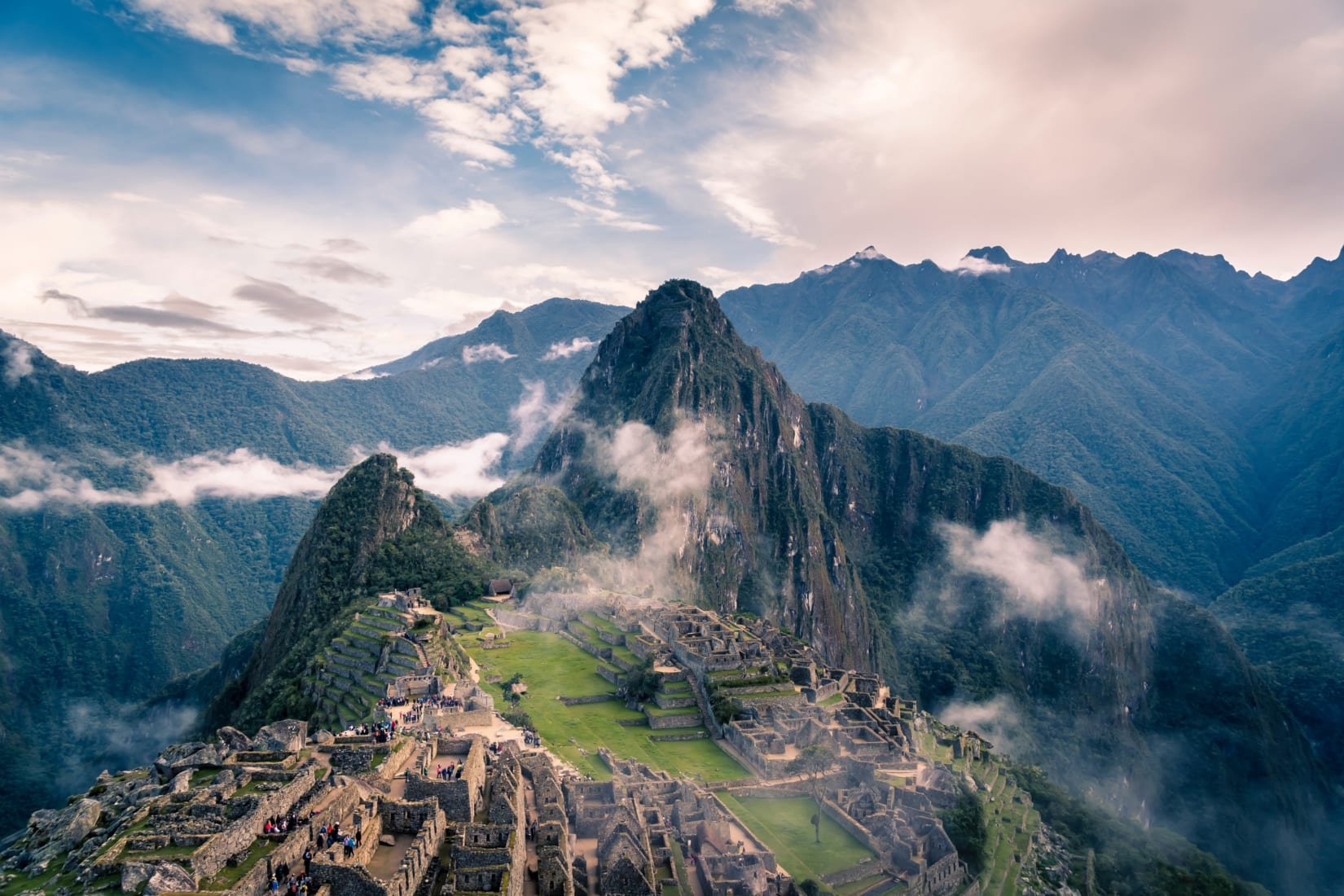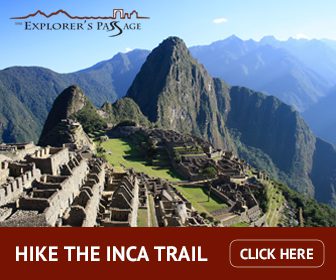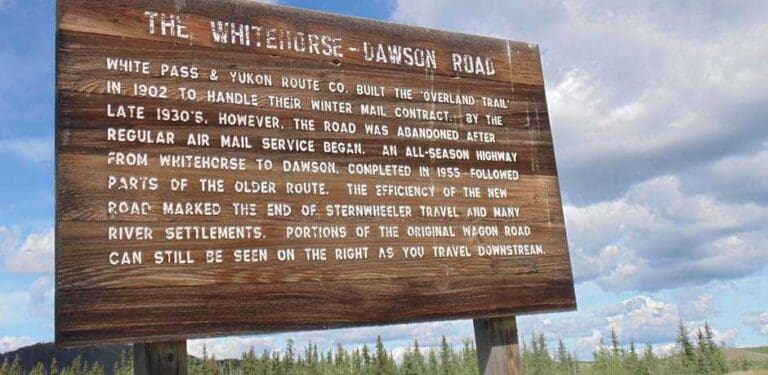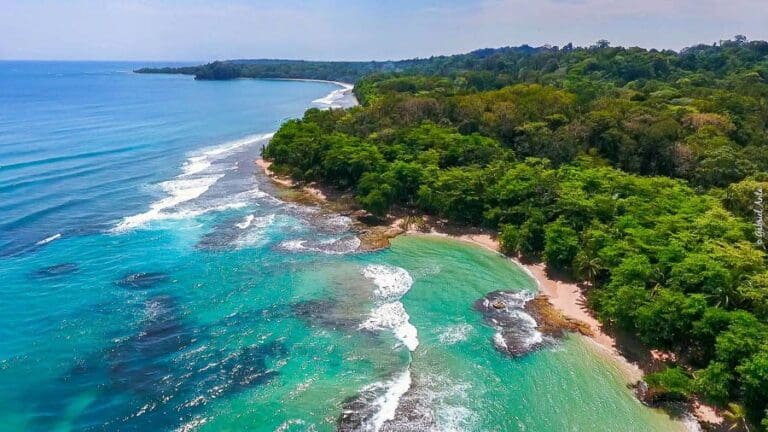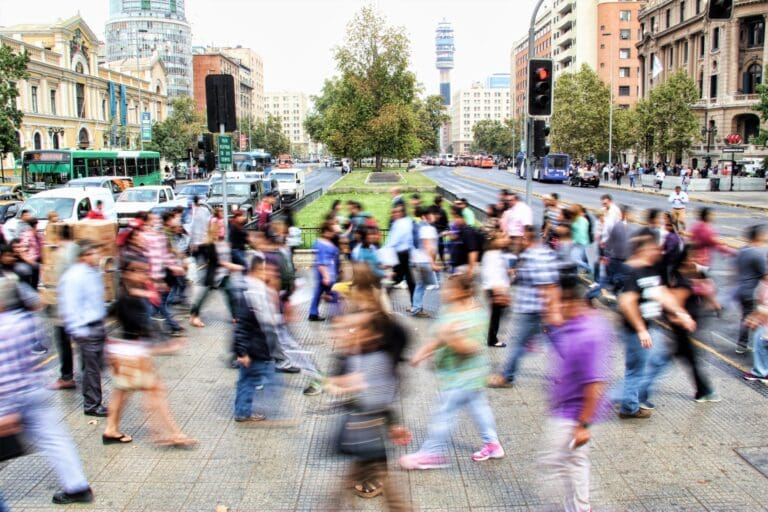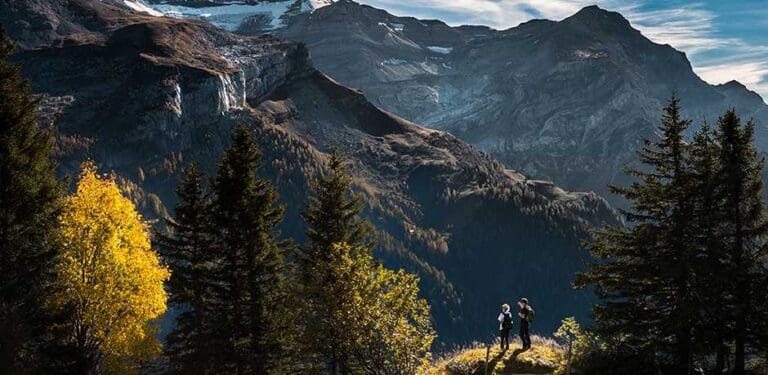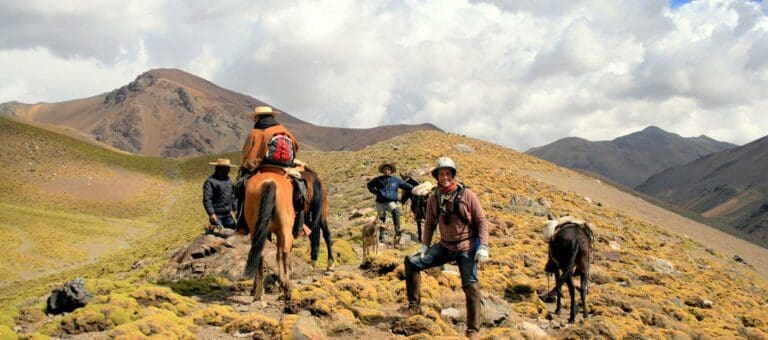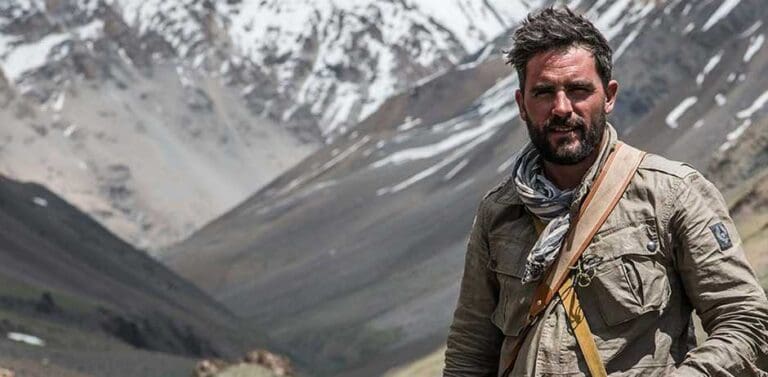The Complete Guide to Hiking the Inca Trail to Machu Picchu in 2025
Hiking the Inca Trail to Machu Picchu is bucket-list stuff. It’s regularly hailed as one of the most iconic treks on the planet, lauded for its fusion of ancient history and jaw-dropping natural vistas. It’ll take you on a route through the legendary Sacred Valley of Peru, past ruined Incan settlements that date back 500 years and snow-capped Andean peaks that spike through the clouds. The climax sees you stroll into Machu Picchu itself via the Sun Gate, following in the very footsteps of Inca emperors and nobles. But before going, you’ll want to be prepared. Luckily, you’ll find some helpful tips here to plan a truly epic Inca Trail experience!
In this Complete Guide to Hiking the Inca Trail to Machu Picchu, we’ll go through everything you need to know about planning and completing this world-famous hike. We’ll outline the various route options available (and there are quite a few these days), what permits you’ll need to think about, the best seasons to visit, and a whole lot more. Let’s begin…
EXPLORE PERU ON OUR INCA TRAIL TO MACHU PICCHU TREK
My Experience on the Inca Trail and at Machu Picchu
I am a bit of an adventure buff and have been fortunate to have travelled to over 50 countries across this amazing world. One of my favorite travel destinations is Peru and there is no better adventure in this beautiful country than the Inca Trail to Machu Picchu trek. I have explored this hike extensively and it is truly the perfect trip for anyone who has a love of history, culture, and adventure.
I am very fortunate to run The Explorer’s Passage, a premier adventure travel company, and in my opinion, we are the best operator on the Inca Trail. Our guides have pioneered trekking on the Inca Trail and have over 40 years of experience there.
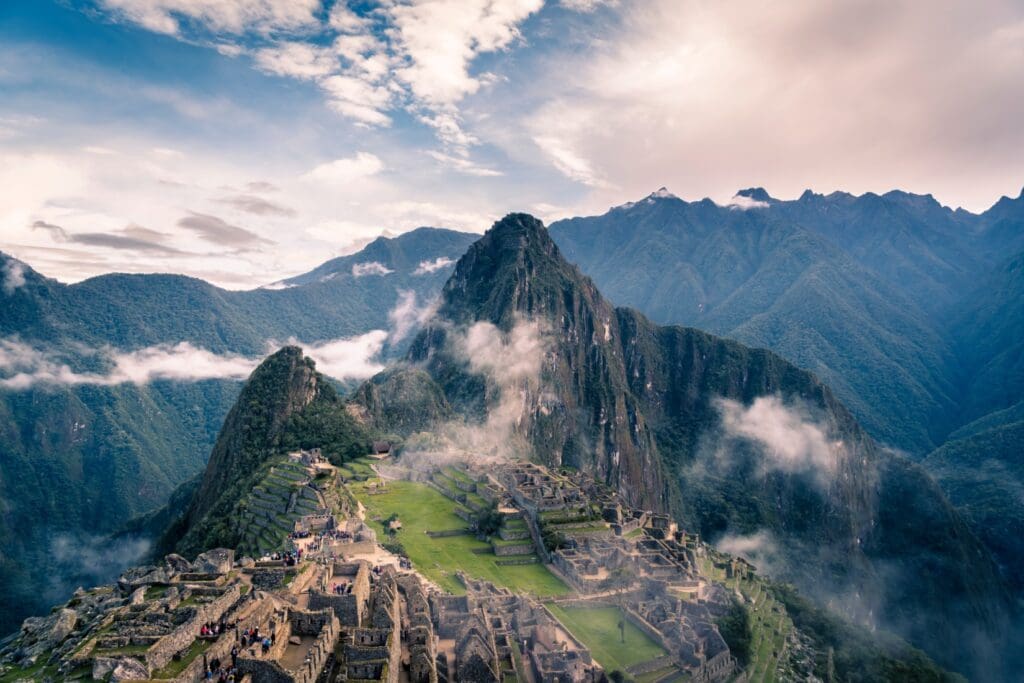
Table of Contents
- About the Inca Trail
- History of the Inca Trail
- Getting to the Inca Trail
- Inca Trail Hiking Routes
- The Classic Inca Trail Trek 4-Day Itinerary
- Gear, Training, and Preparation
- Altitude Considerations on the Inca Trail
- Other Considerations for the Inca Trail
- Inca Trail Permits
- Passports and Visas to Visit Peru
- When to Hike the Inca Trail
- Frequently Asked Questions (FAQs)
1. About the Inca Trail and About Machu Picchu
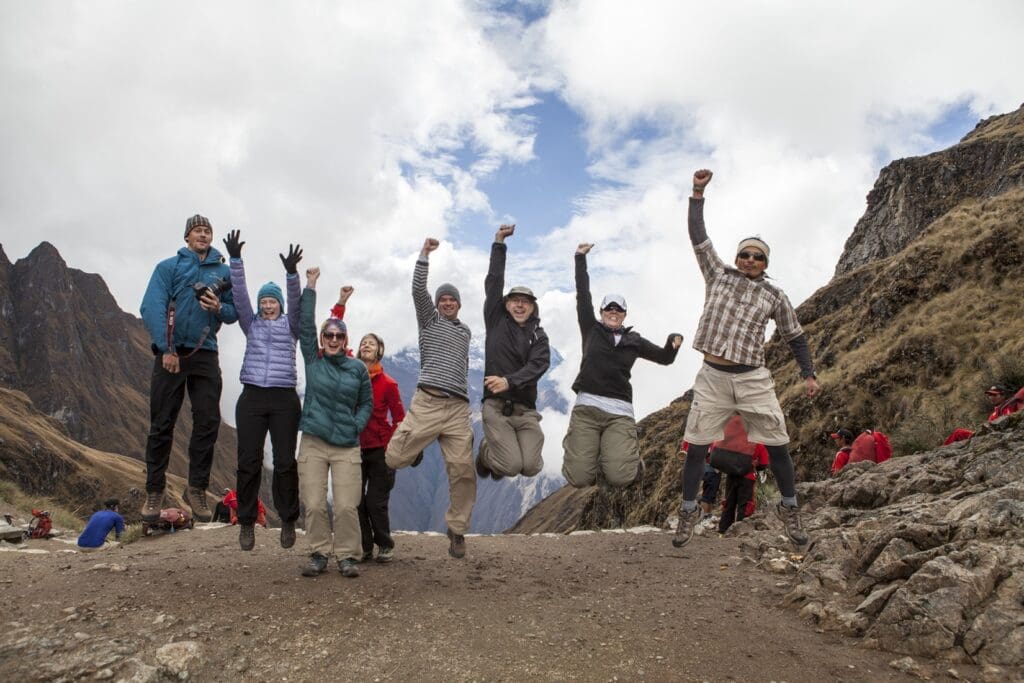
Many wonder if the Inca Trail is worth the trip. We certainly think so! The Inca Trail, or the Camino del Inca, is one of the most important features of South America’s past and present, and the trek to Machu Picchu is unlike any other adventure in the world. There are very few trails where you can actually walk through history like this. On this adventure, you will continuously encounter 500-year-old Incan archaeological sites, and at the end of the trek, you receive a great reward as you ascend the Sun Gate and reach the legendary Machu Picchu site.
Another factor that makes the Inca Trail to Machu Picchu trek one of the best adventure experiences on the planet is the diversity of the terrain that you will encounter along the way. Whether you are climbing stone staircases, crossing wooden bridges over rivers, weaving through tropical jungles, or navigating through cloud forests surrounded by mountain peaks, it is truly once-in-a-lifetime journey. Along the way, you may even spot curious llamas, alpacas, spectacled bears, enormous condors, and various other fascinating Peruvian fauna!
The high-altitude ruins of Machu Picchu are located on a mountain ridge 7,972 feet (2,430 meters) above sea level at the end of the Classic Inca Trail Route, in the Urubamba Province of Southern Peru. When looking at a map or satellite imagery of Machu Picchu, you can see that it is hidden within deep forestation, 50 miles (80 kilometers) northwest of Cusco (the former Inca capital).

2. The History of the Inca Trail
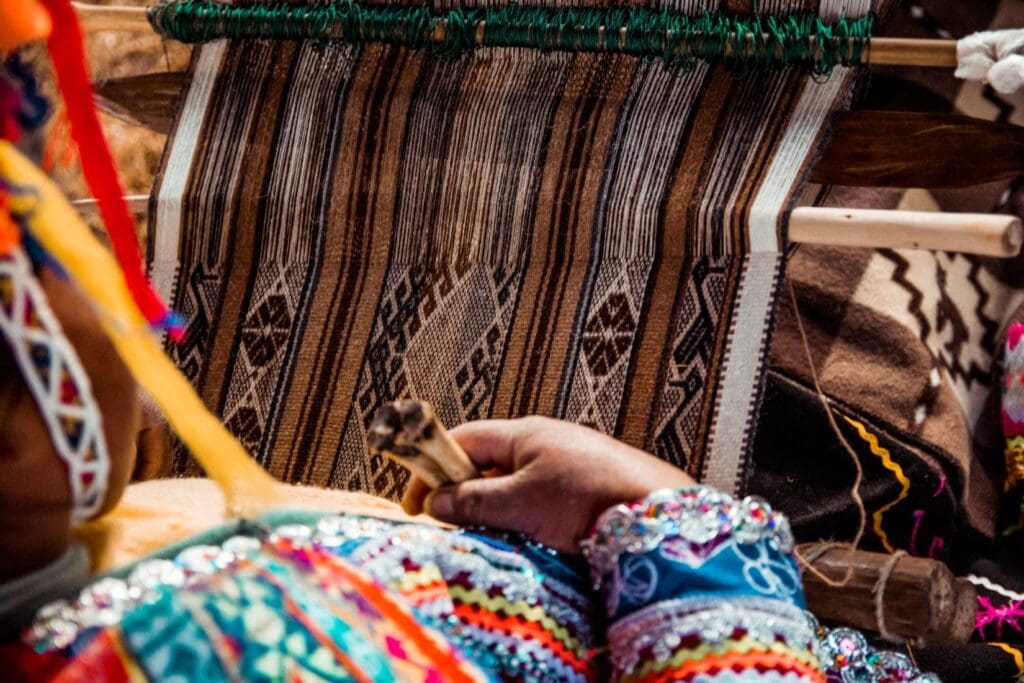
The Inca Trail has an extraordinary history. The Inca Empire extended into parts of what is now Colombia, Ecuador, Peru, Chile, Argentina, Brazil, and Bolivia, and the original Trail stretched approximately 25,000 miles (40,235 kilometers) throughout these areas. During the 15th and 16th centuries, the Trail was used as a key trade route as well as for transportation. However, parts of it were also used for ceremonial purposes and as a pilgrimage route.
Therefore, there are many fascinating theories about the purpose of the connection of the Inca Trail to Machu Picchu, which was built at the height of the Inca Empire. Some researchers believe it served as an annual pilgrimage route to honor Inti, the Incan God of the Sun, who was thought to have been born on the Island of the Sun at Lake Titicaca. It is said that the Trail follows the path of the Sun’s rays during certain times of the year, from Lake Titicaca to Machu Picchu.
The construction of the city of Machu Picchu spanned the reigns of two Inca rulers: Pachacutec Inca Yupanqui (1438–71) and Tupac Inca Yupanqui (1472–93). However, a little over a hundred years later, the city lay mysteriously uninhabited. Historians have disputed the reasons for this, with some arguing that invaders killed the city’s population during the Spanish Conquest, and others arguing that the city’s population succumbed to a smallpox epidemic, years before the Spanish arrived.
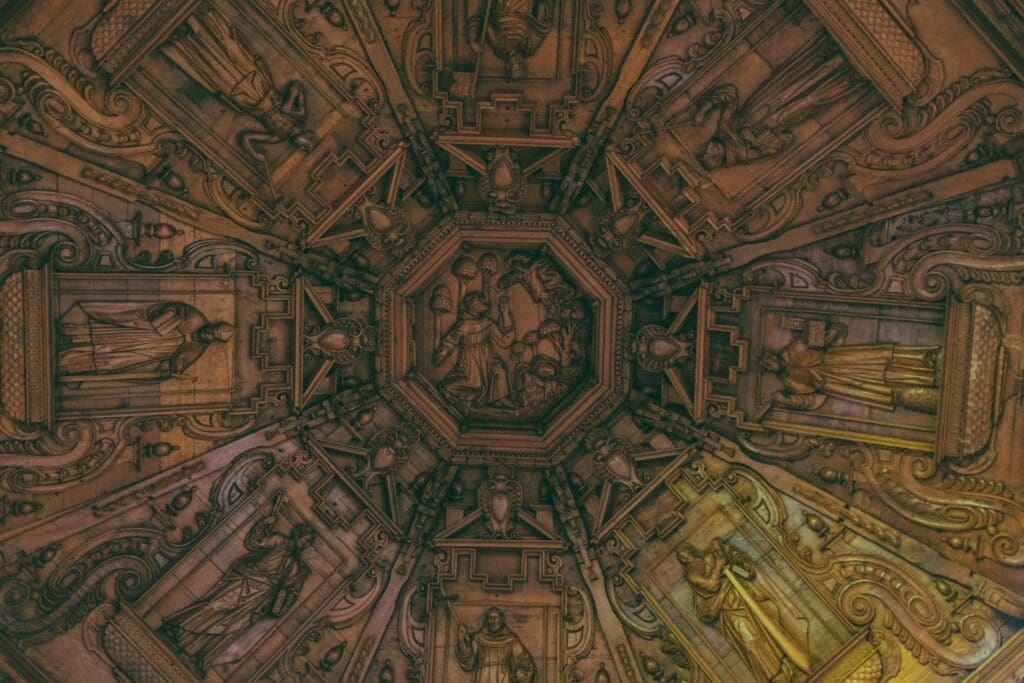
During and after the Spanish Conquest, the Inca Trail and Machu Picchu became targets for plundering and theft. It has been reported that Germans Augusto Berns and J.M. von Hassel initially found Machu Picchu during the 1800s and early 1900s, respectively. However, due to the dense forestation that had started to amass around the abandoned city, Machu Picchu became far less targeted by looters than other easier-to-access sites along the Inca Trail in Peru and in the surrounding areas. The locals may also have kept quiet to save their secret city from the aggressive looting campaigns, so by the 19th century only a few locals and academics were even aware of Machu Picchu’s existence.
3. Getting to the Inca Trail
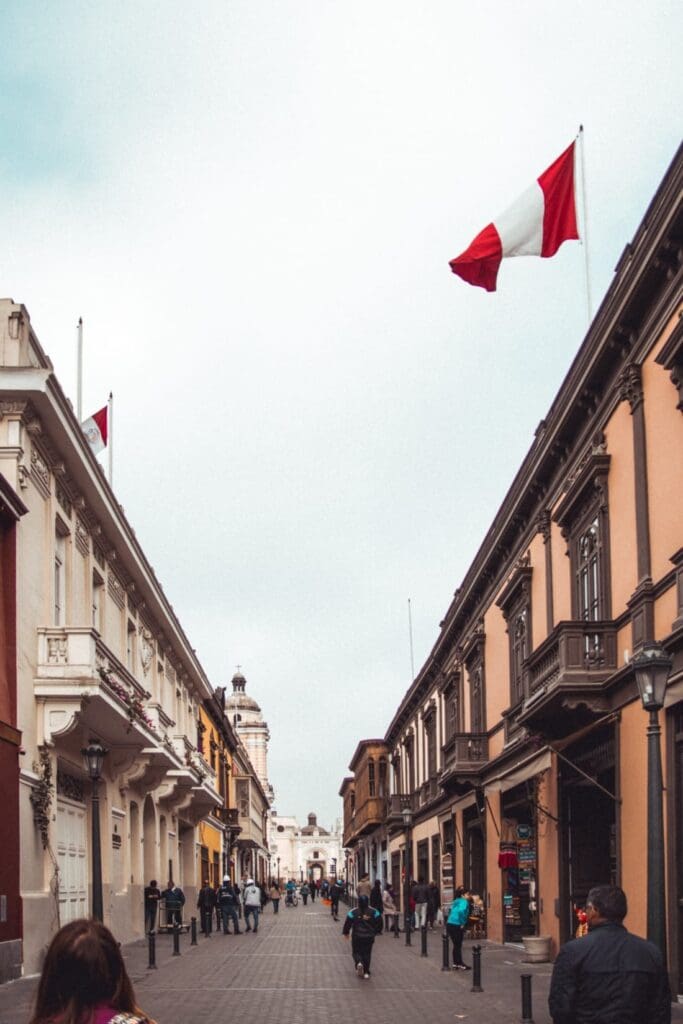
With international flights, efficient trains, and frequent buses, traveling to Machu Picchu is much easier now than when Hiram Bingham first visited in 1911!
Depending on your preferred method of transportation to Peru, there are a few different options. A majority of visitors make their way via Lima, Peru’s capital city. After arriving in Lima, you can take a short connecting flight or a longer bus ride to Cusco.
Although the journey can be longer, many adventurers seeking to visit Machu Picchu hike up the Inca Trail to this extraordinary city and are rewarded with its magnificent beauty, structural feats, and the vast natural backdrop that envelops it.
How long it will take you to hike to Machu Picchu will depend on the route you choose. There are a number of trekking routes along the Inca Trail to Machu Picchu. However, the Classic Inca Trail route is a 3- to 5-day hike, and on average, it takes 4 days and 3 nights to reach Machu Picchu. For those short on time, there is a shorter route to Machu Picchu. This trek starts at KM 104 on the Trail and only takes one day to hike to Machu Picchu.
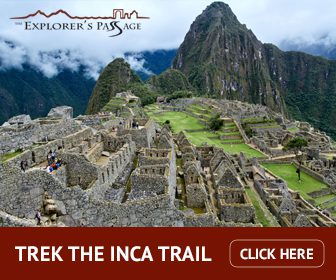
Other Inca Trail hiking tours, such as the Salkantay Trek, will be discussed later in this guide.
Next, we’ll explain a bit more about each of the parts of the journey, to get the most out of your trip.
4. Inca Trail Hiking Routes
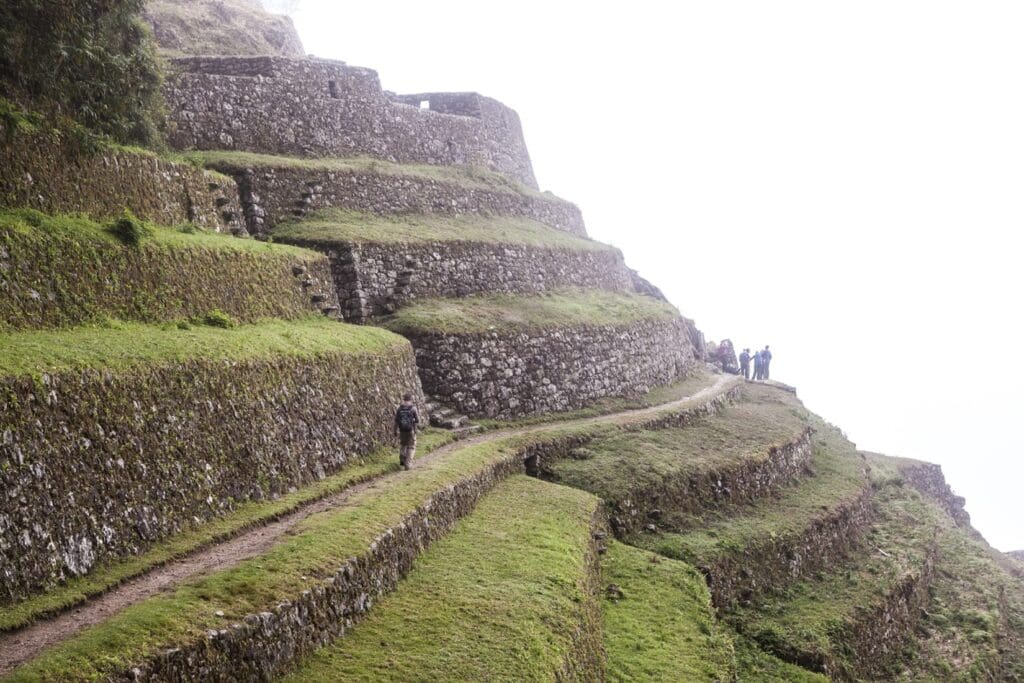
You may ask how long it takes to hike the Inca Trail. The answer will depend on your preference. There are several route options to take, which allows you to choose your preferred experience. Outlined below are three hiking choices, followed by more detailed information on the Classic Inca Trail hike. Varying from one to 14 days in duration, each of these routes caters to different audiences based on their length, popularity, and availability of accommodations en route. All four of them are one-way treks. Depending on the tour operator that you make your trip reservations with, you will typically use a mixture of public and private transportation to return to Cusco from Aguas Calientes.
The One-Day Inca Trail Hike (1-day trek)
If you are short on time, you can trek to Machu Picchu in one day (with an early start, of course!). To achieve this, you will take the train from Cusco to a location on the trail known as KM 104. From there, you will hike about nine miles (15 kilometers) through the Sun Gate to the Machu Picchu sanctuary. This is a great choice if you want to view Machu Picchu and experience a short section of the Inca Trail trek, all in the same day.
The Classic Inca Trail Route (3- to 5-day trek)
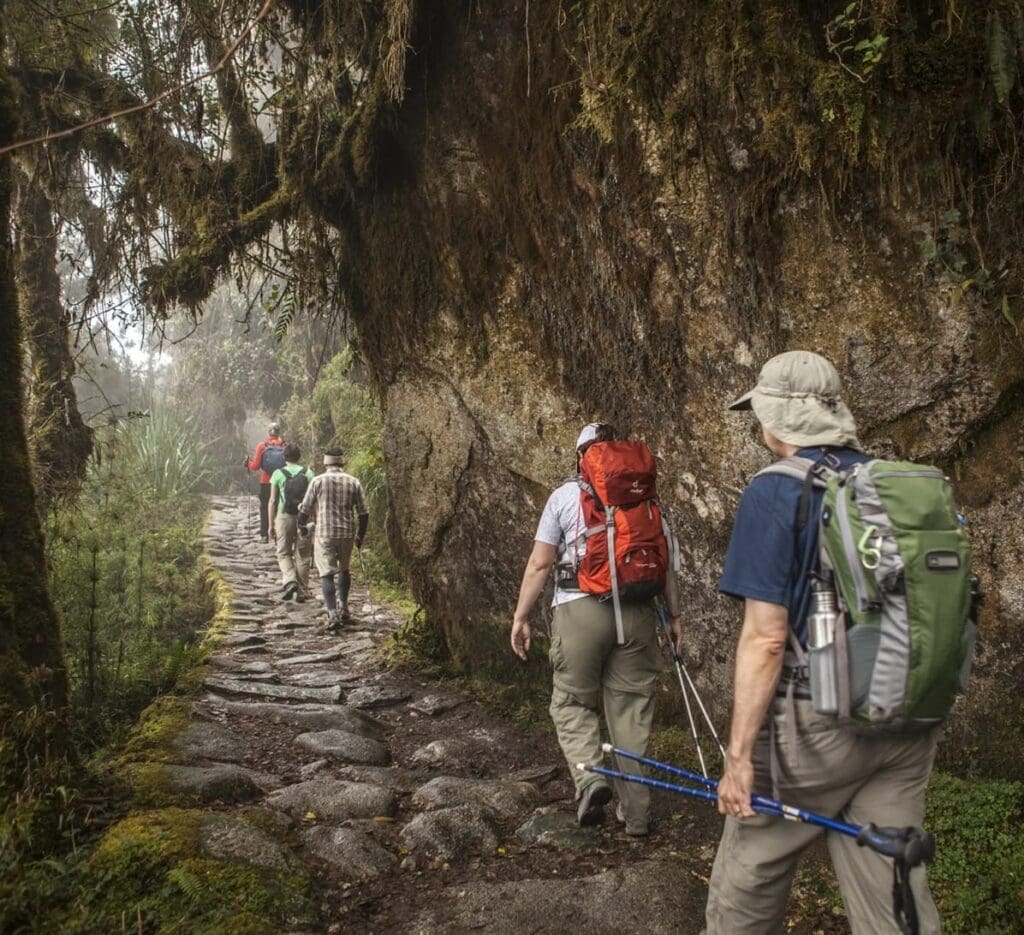
The Classic Inca Trail Hike is the most popular route to Machu Picchu of the four options presented in this post. How long it takes to walk the Inca Trail will depend on your preference and trekking itinerary, but hiking this route can take between three and five days.
The Classic Inca Trail Hike begins at a location along the trail known as KM 82, at the village of Piscacucho. During the hike, adventurers travel 26 miles (42 kilometers) in total and reach a maximum altitude of 13,776 feet (4,200 meters) above sea level.
The Explorer’s Passage itinerary for the Classic Inca Trail hike is for four days, which we have found to be the optimal length of time. On this journey, trekkers cross the Urubamba River and pass through many small villages and incredible landscapes. On the final day, you enter Machu Picchu the same way the Incas did, through Inti Punku (the Sun Gate).
Next, we provide more detail on what to expect each day of the 4-Day Classic Inca Trail Hike.

5. The Classic Inca Trail Trek 4-Day Itinerary Overview
Note: as mentioned earlier, this section is from The Explorer’s Passage itinerary for the “Inca Trail to Machu Picchu” adventure trip. Contact us to find out more or get a copy of the complete detailed itinerary.
Pre-Trek Days in Cusco
It is wise to spend a few days in Cusco before your Inca Trail tour begins in order to acclimate to the higher altitude. This extra time will increase your chances of success on your adventure. In Cusco, you will have an opportunity to take walking tours and visit UNESCO Cultural World Heritage Sites in this historic capital of the Inca Empire. In the evening, enjoy some of the best food in the world, sample the local fare of this agricultural region, and perhaps taste one of the 3,000 varieties of potato cultivated here!
Day 1
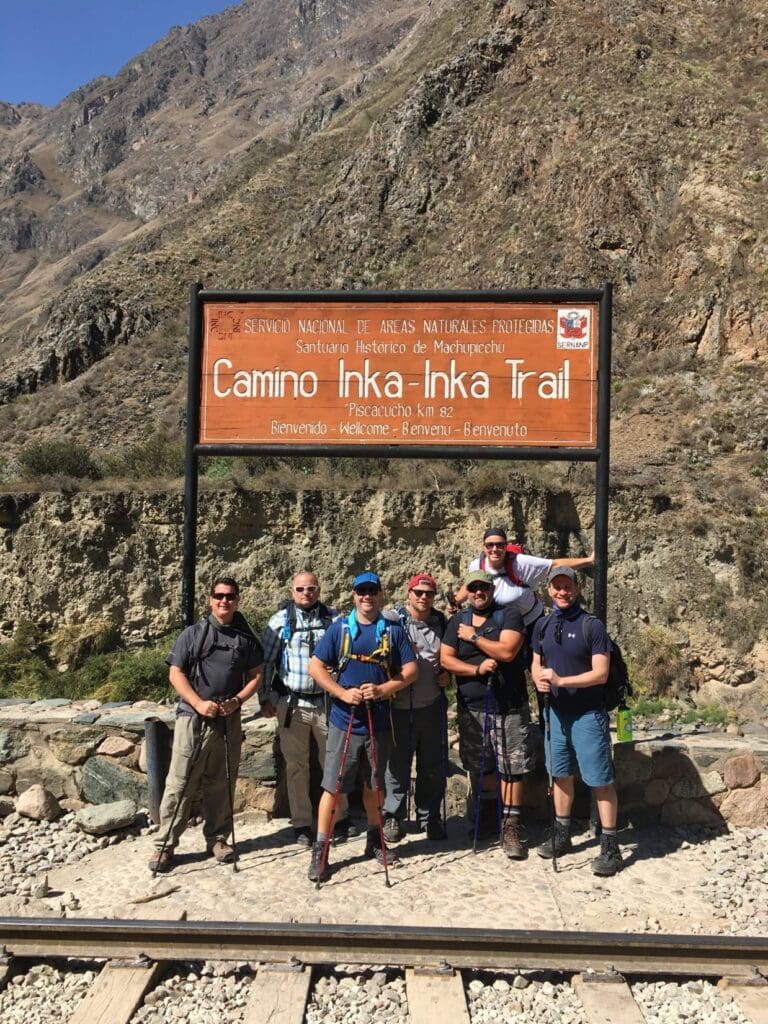
Day 1 of the Classic Inca Trail trek begins at a location called KM 82, which is approximately 2 to 2.5 hours from Cusco. The hike starts relatively flat, and is a great way to warm up your body for the adventure. You will break for lunch at Q’oriwayrachina and prepare to cross the Urubamba River at Q’ente, with an option to visit the Wayna Q’ente archaeological site (which roughly translates to “old hummingbird village”). You will camp near the Inca ruins of Llaqtapata, overlooking a spectacular backdrop of terraces and mystical mountains. Keep your eyes open for the smooth flight patterns of Andean Condors soaring overhead.
Day 2
The trek continues up the Cusichaca Valley, eventually reaching the small village of Huayllabamba, which means “grassy plain.” You will then follow a tributary of the Kusichaka River on a steady climb up this narrow valley. It eventually opens to a cloud forest of Polylepis trees and, ultimately, a large Pampa plain. Here, you will rest for the evening at the idyllic campsite of Llulluchapampa, nestled at 12,500 feet (3,800 meters) above sea level.
Day 3
On the third day of the Inca Trail tour, you will wake up and head into the heart of the Andean mountains. Upon reaching Warmiwanusqua Pass (or “Dead Woman”) at 13,692 feet (4,173 meters) above sea level, you’re awarded a magnificent panorama. Take a minute to capture some photos before descending to the Pacaymayo River before beginning another climb to the ruins of Runkuraqay. From here, the trail passes through a high cloud forest while the scenery grows more and more dramatic.
Reach the site of Sayacmarca (aptly named “steep-place town”) at 12,551 feet (3,826 meters), and sit back to enjoy views of the Aobamba Valley. You can also take a leisurely walk through the grand structures before continuing along the ridge under the watchful summits of Mt. Salkantay to the west and Mt. Pumasillo to the north. Follow the rolling stone trail, eventually arriving at Phuyupatamarka, your campsite for the evening, and spend the remainder of the day exploring the five fountains and an altar that might have been used by the Inca for ritual purposes.
Day 4
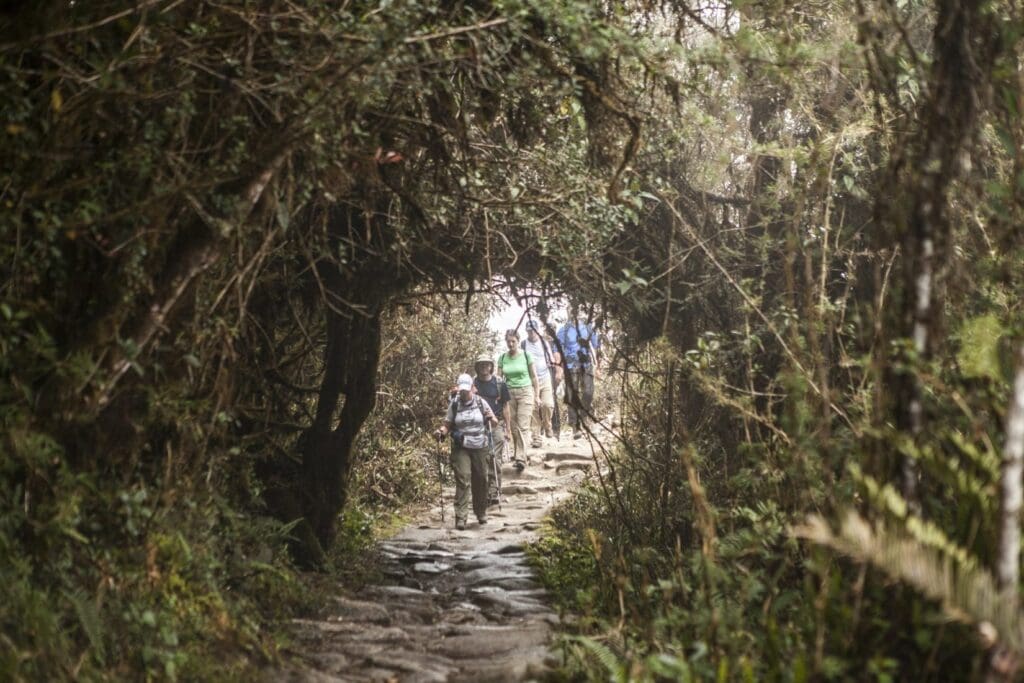
This morning, you will descend nearly 3,000 feet (915 meters) on a combination of trail and irregular staircase composed of 1,500 steps carved into the granite. The Willkanota River comes into view, and the lush jungle grows back around you as the songs of birds and butterfly wings fill the air, eventually joined by the sound of the river and train as you near the railroad tracks below (which lead to Aguas Calientes). Take a spur trail leading to the ruins of Winay Wayna to gain some energy from this ancient site, which translates to mean “forever young,” before we press on for the final push of the Inca Trail tour to our ultimate destination. Finally, you will reach a series of steep stairs that ascend to the Sun Gate, or Inti Punku. As you pass through the Sun Gate, the mighty citadel of Machu Picchu comes into view.
Typically, after hikers finish this Inca Trail trek, they are tired and hungry and wish to head to their hotel in Aguas Calientes for a fresh shower and meal. Most hikers elect to do their full tour of the citadel the next day. If you opt for this, you will walk through the outskirts of the Machu Picchu citadel, getting a glimpse of the ruins as you head down the mountain to the entrance area. Here, you will take a short ten-minute bus ride to the downtown area of Aguas Calientes, where you can then walk to your hotel and relax for the evening.
Post-Trek Days in Aguas Calientes
When you finally complete the four-day Inca Trail hike, the real adventure begins! At the base of Machu Picchu, Aguas Calientes is a picturesque but busy hikers’ hub that features a main train station and a bustling tourist industry with an array of restaurants and shops. It’s a great town in which to spend a restful post-trek night, before setting out to experience a full tour of Machu Picchu.
On the morning after trekkers complete their Inca Trail Hike to Machu Picchu, many people elect to climb either Huayna Picchu or Machu Picchu Mountain. We go into more depth about each hike in the “Additional Hiking Near Machu Picchu” section below. However, some visitors elect to skip the hikes at Machu Picchu altogether and instead spend all their time exploring the ruins of the Machu Picchu citadel. If this is what you prefer, you can skip the next section (“Additional Hiking Near Machu Picchu”) and go straight to “Key Sites at Machu Picchu” later.
Check out The Explorer’s Passage blog post here to see a fantastic mini-documentary video about the journey, created by filmmaker Devin Graham. This video highlights many of the most striking highlights of the Inca Trail tour and Machu Picchu, and it is truly one of the best visual summaries of this once-in-a-lifetime experience!
6. Gear, Training, and Preparation for Hiking the Inca Trail
Our answer to the question, “How difficult is the Inca Trail?” is simple: the more you prepare, the easier it is. If you have committed to embarking on this adventure the planning process most likely started six or more months in advance. There are two critical areas of preparation that one needs to take into consideration if they wish to successfully complete this trek: these are Gear and Fitness.
Gear and Equipment
Let’s start with Gear! Hikers will need to add the proper gear and equipment to their Inca Trail packing list to complete the journey to Machu Picchu. This includes appropriate footwear, lower body clothing, upper body clothing, face and head protection, and outerwear to protect yourself from the elements. You will need a daypack to carry any gear or clothing that you will use for each day’s hike, as well as a duffle bag that will hold your personal belongings, extra clothing, sleeping bag, etc. You can learn more about some essential items to pack in a standard day pack recommended by Jeff Bonaldi, the Founder and CEO of The Explorer’s Passage.
It is also important to note that the evening before your Inca Trail hike begins, you will most likely meet with your guide and he/she will outline the things you need to know for the journey ahead. You will also review your packed loads. It is common practice for each hiker to have a specially sized duffle bag, which porters will carry throughout each day on the trail. Depending on the number of trekkers, Peru’s government requires a specific number of porters, guides, and other staff (the ratios are there to help support the trekkers and to prevent the workers from being taken advantage of). Your guide(s) will weigh the duffle bag at your hotel in Cusco to ensure it is under the maximum weight limits, which are typically around 17 pounds (7.7 kilograms). The rest of your gear will go in your daypack. You want to keep your daypack below 15 pounds (6.8 kilograms) if you can, and you should only carry the core essentials. If you have extra clothing beyond what is needed for your trek in your daypack and duffle bags, most hotels will typically let you leave it locked up there for when you finish the hike and return to the hotel.
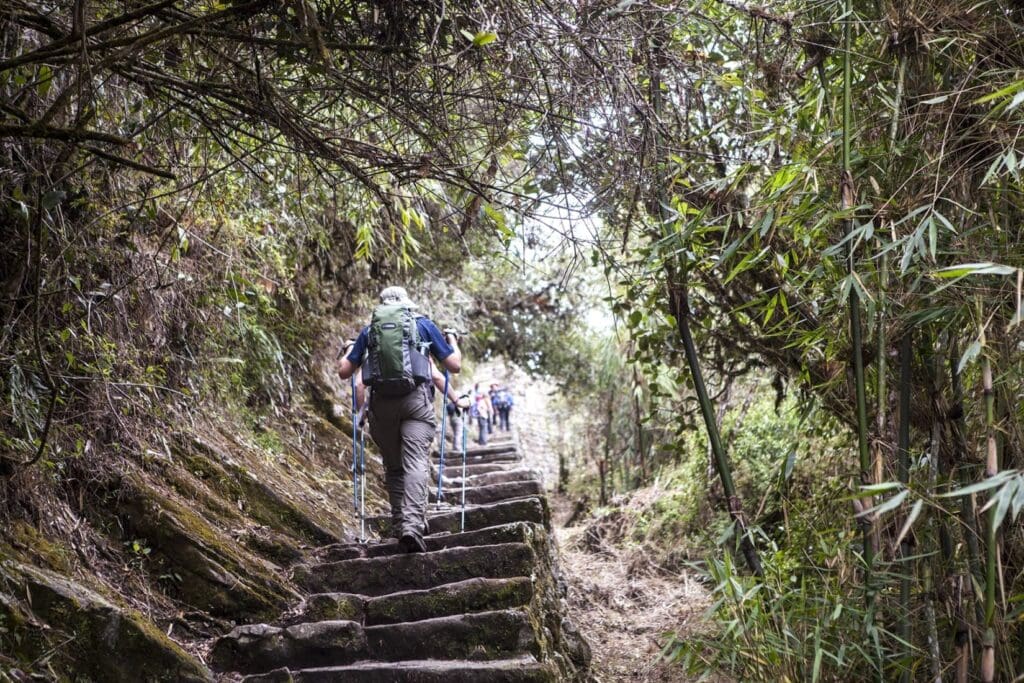
Finally, one additional gear item which we at The Explorer’s Passage highly recommend is a pair of trekking poles. Some people love trekking poles, and some people do not use them at all. There are countless sections along the route that feature stairs that can be arduous for the knees. Trekking poles provide an enormous amount of support in these and other challenging sections, and using them can sometimes make your hike much easier and therefore much more enjoyable.
For purposes of brevity, we do not enumerate a complete packing list in this guide. If you are interested in acquiring a copy of our itinerary and packing list for the Inca Trail to Machu Picchu adventure trip with The Explorer’s Passage, please contact us and we will be happy to send you a copy by email!
Fitness and Training
Hiking the Inca Trail is moderately difficult, and it is important that hikers take adequate physical preparation. Some sections of the trek are more difficult than others, and involve steep ascents, high altitude, and long days on the trail. Though some may find the distance covered on the trek each day to be challenging, proper physical preparation will allow travelers to enjoy the trek to the fullest.
When trekking along the Classic Inca Trail route, elevation is something to keep in mind. It is important to note that this hike is not easy, and certainly not a trek you can take on without adequate physical preparation. You will be hiking up to 14,000 feet (4,267 meters) in elevation, and on one of the hiking days you could be on the trail for up to 12 hours.
How fit do you need to be to trek the Inca Trail? Altitude (discussed later in this guide) and its effects can cause challenges for even the fittest traveler, so we strongly recommend you complete a detailed three- to five-month training plan before you arrive in Peru. This training plan should include but is not limited to day hikes of at least 8 to 10 miles (13 to 16 kilometers), cardio training, familiarization with multi-day treks and camping, and uphill training on stairs or hills. If you have the opportunity to train at higher altitudes we highly recommend this preparation as well, though this may not be an option depending on where you live.
For context, The Explorer’s Passage rates our “Path of the Sun” 4-day trek on the Classic Inca Trail route as a “Moderate”-level adventure. Our “moderate” trips are defined as more active and require a bit more endurance than the typical trip. Participants can usually expect to hike between 4 and 8 miles (6.5 to 13 kilometers) per day, with occasional steep inclines and altitudes of up to 15,000 feet (4,570 meters) above sea level. The Trail is well-marked and defined, but the ground underneath can be uneven. While walking you will encounter stone, gravel, and dirt, with not too much grass.
7. Altitude Considerations on the Inca Trail
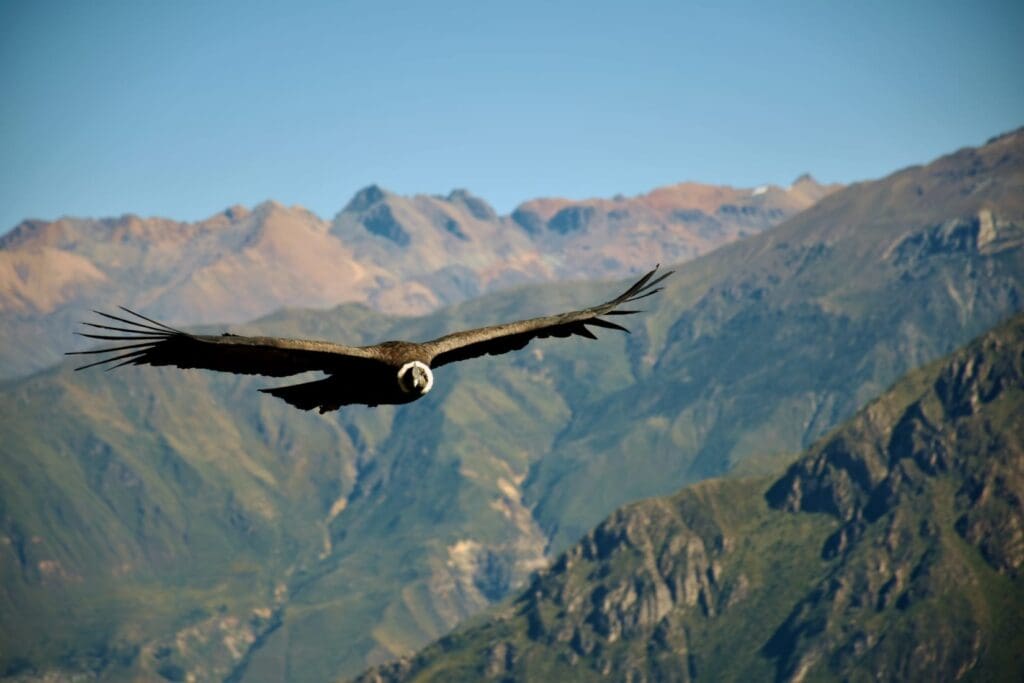
Let’s talk a little more about elevation. Cusco, Machu Picchu, and its surrounding cities vary in how far they are situated above sea level. To start, Cusco sits at 11,152 feet (3,400 meters) in elevation. Because most visitors must travel through this city to get to all Inca Trail tours and Machu Picchu, many trekkers spend 1.5 to 2 days there beforehand, in order to acclimatize and mitigate the chances of experiencing altitude sickness. If you are doing the standard 4-Day Classic Trek, the maximum elevation that you will most likely reach is 13,776 feet (4,200 meters). Altitude sickness can affect every adventurer no matter how physically fit you are, and if you don’t take the time to get used to the change, it can potentially have a very detrimental impact on your entire trip. Read more essential tips on hiking at high altitudes in our linked blog post.
Machu Picchu is located at 7,972 feet (2,430 meters) in elevation, so most people who have been hiking the Inca Trail for several days do not feel the altitude when they get there as long as they have had plenty of rest and stayed hydrated during their journey. From Machu Picchu’s citadel, the two peaks that you may opt to climb are Huayna Picchu, at 8,920 feet (2,719 meters) elevation, and Machu Picchu Mountain, at 10,007 feet (3,050 meters) in elevation.
Some trekkers do find it helpful to take medication for dealing with the altitude and potential headaches. We encourage you to speak to your doctor beforehand to see if this may be the course of action which you may want to take.
8. Logistics & Other Considerations for the Inca Trail
Food
Peruvian food is one of our favorite cuisines in the world. You can get extraordinary meals in Lima and Cusco, but what surprises many trekkers on Inca Trail tours is the quality of the food provided by your guides. Most Peruvian guides are incredibly talented chefs and utilize organic ingredients, resulting in fantastic and hearty meals.
Evening meals are typically eaten in a group dining tent, which has a cover to protect you from the elements. In addition to most meals, many tour operators will also provide snacks each day to take with you on the trail. You will likely get coca leaves to chew on, which can help lessen the effects of altitude sickness.
Water
There are multiple water sources along the Inca Trail, such as streams or rivers. Most tour companies utilize either a pump filtration system, boil water, or combine both methods in order to purify water during the trek. Typically, you will be provided with potable water three times per day: at breakfast, lunch, and dinner. It is essential that you fill up your water containers each time you have the opportunity because the hike can be strenuous, and temperatures can get hot during the day. In my experience, I have seen many other trekkers on the Trail run out of water prematurely because they underestimate how much water they will require. We recommend that you have a minimum of 2 liters of water for both the morning and afternoon treks. Depending on your personal preferences, you can either use 32 fluid ounce (1 liter) Nalgene bottles or reservoir-type water systems (such as CamelBak). It is also wise to have salt tablets or electrolytes to add to your water. Additionally, if you are the type of person who likes to be extra prepared, the below items are popular options as a personal backup:
- Lifestraw personal straw-type filter
- Grayl water purifier bottle
- UV light sterilization system, such as a Katadyn Steripen
- Water purification tablets
Tents
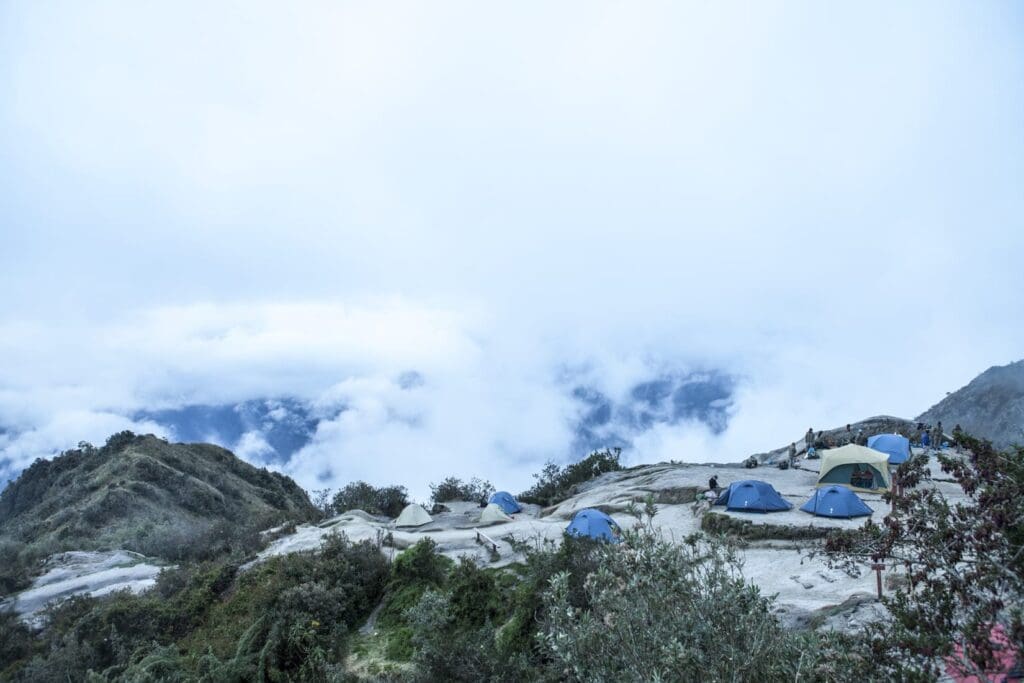
Most tour operators and guide companies that you employ on an Inca Trail trek will provide tents. Typically, three-person tents are utilized for either one or two people. We recommend that you check with the company beforehand, as being comfortable every night on the trail can make a big difference in your overall trip experience. Depending on your service level, the porters may also set up and take down your tents each day. It is a very nice touch when companies provide this, and it allows you to focus on the trekking experience and getting to know the other travelers.
In addition to tents, many tour providers will include a ground cushion for sleeping (such as a Thermarest pad). The pad will provide you with extra cushion under your sleeping bag and a softer barrier between you and the ground. We recommend you bring an extra sleeping pad, as two can provide more optimal cushion than just one.
Temperatures on the Trail
The Inca Trail is similar to other mountainous areas at higher altitudes around the globe. During the day, temperatures can exceed 80 Fahrenheit (27° Celsius); however at night, they can drop below 30° Fahrenheit (-1° Celsius). You need to be prepared for the full temperature range and bring layers of clothing to help manage the changes.
Sun Protection
On an Inca Trail trek, you will be out on the trail between 7 and 12 hours per day. Most of the trail is very exposed to the sun, and it can get warm during the day. We recommend that you prepare yourself for the sun exposure. As a start, you must wear sunscreen each day and pack a bottle of it in your daypack to reapply periodically throughout the day. We also recommend a hat – preferably one that covers the neck, which can be very susceptible to burns. Also, many of our trekkers wear buffs to protect their faces and necks. It is also advisable to consider wearing hiking pants/trousers and long sleeve shirts to protect your skin, especially if you burn easily. You do not want sunburns to ruin your trek, and heat exposure can affect your stamina and health.
Phones
In our contemporary world of seemingly permanent connectivity, it is important to note that the Classic Inca Trail Route is carved through a very remote location and there will not be opportunities to charge your phone or devices during the trek. As you may wish to utilize your phone to take pictures or listen to music, it would be helpful to bring a portable battery backup and/or charger. It is unlikely that you will get any mobile phone signal during the trek, so be prepared to be without contact during the journey and notify your family/friends of this beforehand. Some trekkers still want to keep in touch during emergencies and so they bring devices such as the Garmin InReach, or a satellite phone. Lastly, as an energy-saving tip, keeping your phone (or other device) in airplane or flight mode during the trek can save a lot of battery life.
Bathrooms
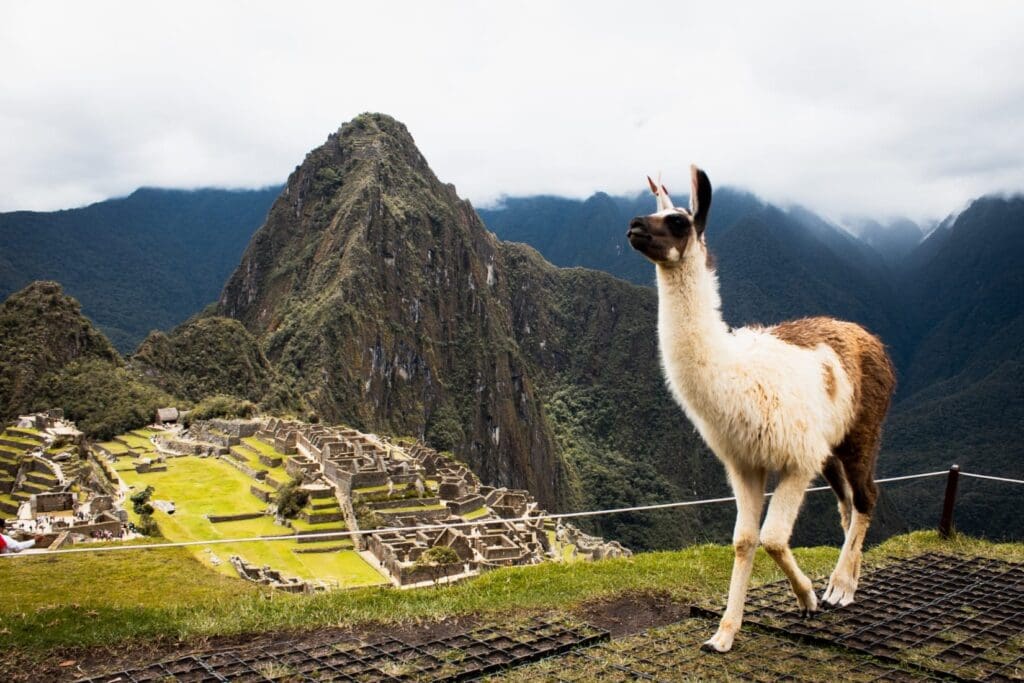
You may be thinking, “how does one go to the bathroom on the Inca Trail?” Well, it is a very good question. First, there are several locations along the route that have outhouse-style toilets. While these are serviced by trail maintenance personnel, trekkers often prefer the portable toilets that most tour operators bring on the trek. The portable toilets are set up during breakfast, lunch and dinner. They also stay accessible throughout the evening.
During the daily trekking segments, there are also places in nature that you will be able to relieve yourself. Female participants can use urine funnels or similar products that facilitate “on-the-go” relief, though it is essential that you practice using them before the trek so that you are comfortable with them and have gotten past the ‘learning curve’ associated with pee funnels! It is also important to keep in mind that you are required to carry all solid waste out, because human waste is not permitted to be left along the Inca Trail or its surroundings. So, using the toilets in camp for regular bowel movements is highly recommended!
Showers
There are no showers along the Inca Trail hike. However, there are a few options to consider if you want to wash yourself each day. Many tour operators do provide bowls of warm water with soap that you can use to wash with in the mornings and after each day’s trek in the evenings. Some operators do bring a small shower tent on the trek as well. If this is something you are interested in, you may be able to pay an extra fee to have this included in your trek. The guides fill up buckets of water that are then heated. The heated water is connected to the shower and is pumped through the showerhead to mimic a regular shower. Biodegradable ‘camp’ soaps are recommended if you plan to shower.
Bugs
Depending on the time of the year, there can be bugs on the Inca Trail, and we advise you to bring bug spray or repellent. Sections of the trail that pass through rainforest often see an increase in bugs. Like a sunburn, too many bug bites can really degrade your experience, so please plan and pack accordingly!
9. Inca Trail Permits
One of the most frequent questions we hear from hikers is, “Do you need a permit to trek to Machu Picchu?” On the list of necessities every traveler needs to remember when making travel arrangements, one of the most important – but also one of the most unexciting and often overlooked – is obtaining permits to hike the Classic Inca Trail to Machu Picchu route!
Because the Peruvian government protects the historic landmark for its natural and historical significance, only 500 individuals are allowed on the Classic Inca Trail tour each day from KM 82. Around 300 of these will be porters, guides and other staff, which leaves room for 200 trekkers that can join the trail per day.
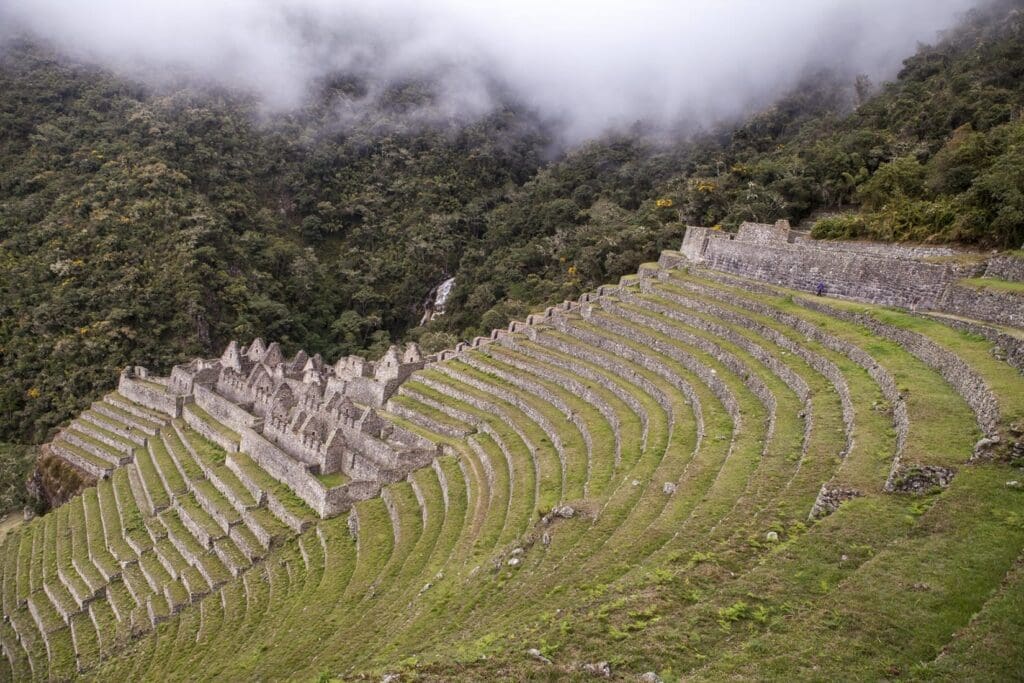
Due to the worldwide popularity of this trek, permits must be purchased before you leave for Peru – sometimes many months before a trip commences! These permits for Inca Trail reservations usually go on sale the October before an upcoming season. For example, for the 2023 trekking season, permits went on sale in early October 2022. And for the 2024 season, you can expect permits to go on sale in October 2023. It is important to note that in past years once they went on sale in October, that permits for certain months like April and May have sold out entirely in just a few days. In addition, in some years permits for June, July, and August have sold out as early as mid-February. This is why it is critically important to plan and choose your dates at least six to nine months in advance. Once you decide on the times that you would like to go (which are discussed in the final section of this guide), your tour operator can help you secure your permits to hike the Inca Trail.
If traveling in a group, it is essential that your group or party reserves Inca Trail permits in a contiguous ‘block’ at the same time. In our experience at The Explorer’s Passage, we have seen several instances of a group or a family unit not doing this despite warnings. As a result, some of these parties have not been able to hike the Trail together as a group. Even a few minutes or hours can make a difference!
Please also note that the permitting system is carefully structured to prevent people and organizations from abusing it. Travel companies and tour operators cannot buy Inca Trail permits in bulk to resell at a later date. In order to obtain a permit, you will need to provide a full name, date of birth, passport details (passport number, country of issue, date of issue, and expiration date) and the dates you want to trek the Trail. Once the application for a permit is submitted, it typically takes anywhere from 24 to 72 hours to get a response from the Peruvian permit authority (through the Peruvian Ministry of Culture). This means that until a successful confirmation is received, you should not book flights to or hotels in Peru. Also, be aware that you will be required to pay a security deposit when initially booking the permit. If the permit is not secured for any reason, this deposit can be refunded. When a permit is successfully secured and paid, the deposit is no longer refundable.
Another critical thing to know is that after a permit is secured, you cannot change travel dates. If you can no longer go on the trek as scheduled for whatever reason, you will forfeit your deposit and the permit will go unused. Unfortunately, you can not transfer your Inca Trail permit to a friend or family member.
If you get a new passport after securing a permit, you must contact your tour operator to resubmit the new identification information to the Peruvian permitting authority. Please ensure that the passport you bring with you to Peru matches the permit’s details – otherwise, you will not be allowed to begin your Inca Trail tour! If you changed your passport, it would be wise to bring both the old and new passports to Peru. There are multiple permit checks performed along the way, and the agents are thorough!
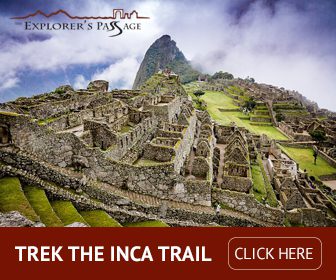
10. Passports and Visas to Visit Peru
When planning your dream trip to hike the Inca Trail, it is critical that you ensure your passport is valid through the duration of the planned trip dates, as well as for six months after the trip dates. Do not assume that it is current, only to find out closer to departure that it needs to be renewed! Many countries now require this additional six months validity, including Peru.
Depending on your country of origin, you may also be required to obtain a visa to enter Peru. To learn more, contact the responsible government office to see if you need one in advance. Visitors arriving from the U.S. currently do not need to obtain a visa in advance.
11. When to Hike the Inca Trail
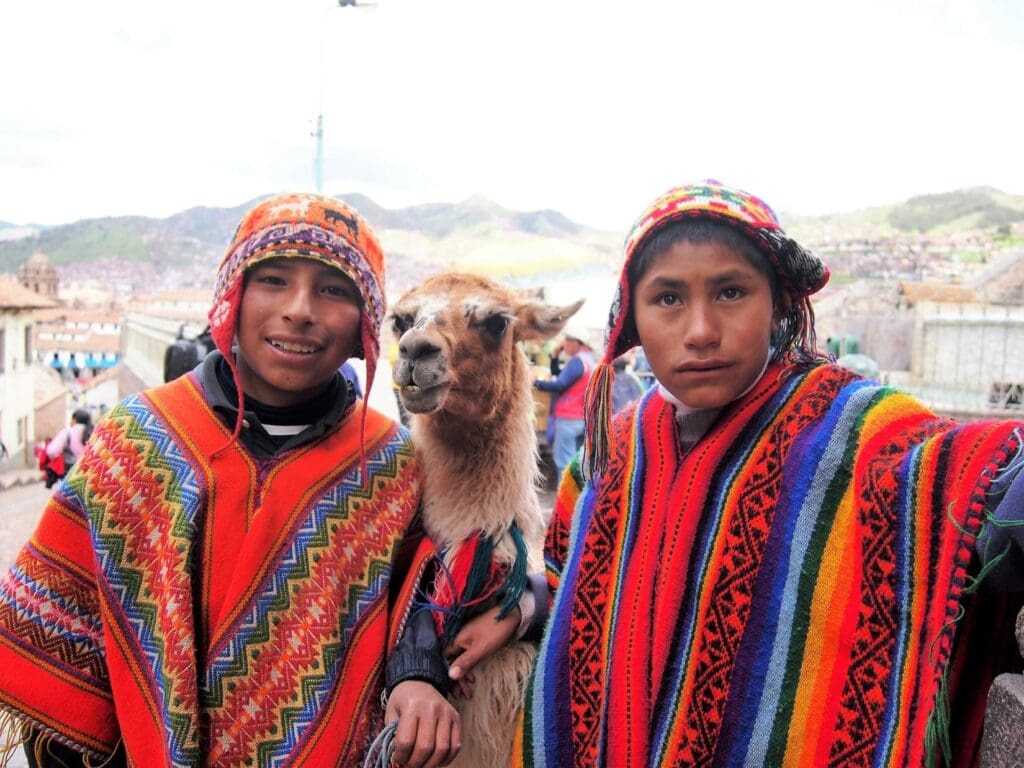
We covered the process of obtaining your permit, but it may also be helpful to understand the best times of each year to hike. The most popular time to hike the Inca Trail is between April and September. With the rainy season in Peru over, most tourists and travelers will have planned to take their trip during these months. The trail itself is open for 11 months of the year, but all tours are closed in February for environmental and archeological maintenance. The mountains Huayna Picchu and Cerro Machu Picchu, which are both part of the Machu Picchu sanctuary, are temporarily closed each year for maintenance (in recent years, they have been closed at different times in April, though this may not always be the case and the timing of closures can be variable going forward. Check with your tour operator beforehand to find out!).
January and March
During these months Inca Trail tours are relatively uncrowded, wet, and certainly fun if you enjoy a bit of a challenge. Fewer tourists and fewer queues when you arrive in the city can mean that traveling to and around Machu Picchu in the winter season has its advantages. Because Machu Picchu is considered to be a shrine to the Inca Emperor Pachacuti (1438–1472), hiking at this time of year can highlight the quiet beauty that this site was created to be appreciated in.
April
Lovely and temperate, April is an excellent time for an Inca Trail Machu Picchu tour due to the firmer ground and clearer weather. Photography can also be quite fortuitous in April if you want to capture some high-quality pictures of Machu Picchu and the surrounding forests.
May
Gorgeous weather for hiking the Inca Trail and reasonably dry, May is a great time to visit Machu Picchu as well. Be aware of booking and travel costs, though, as May is the start of peak traveling season for college and university students. Flights and accommodations can get somewhat expensive if you don’t plan well.
June, July, August, and September
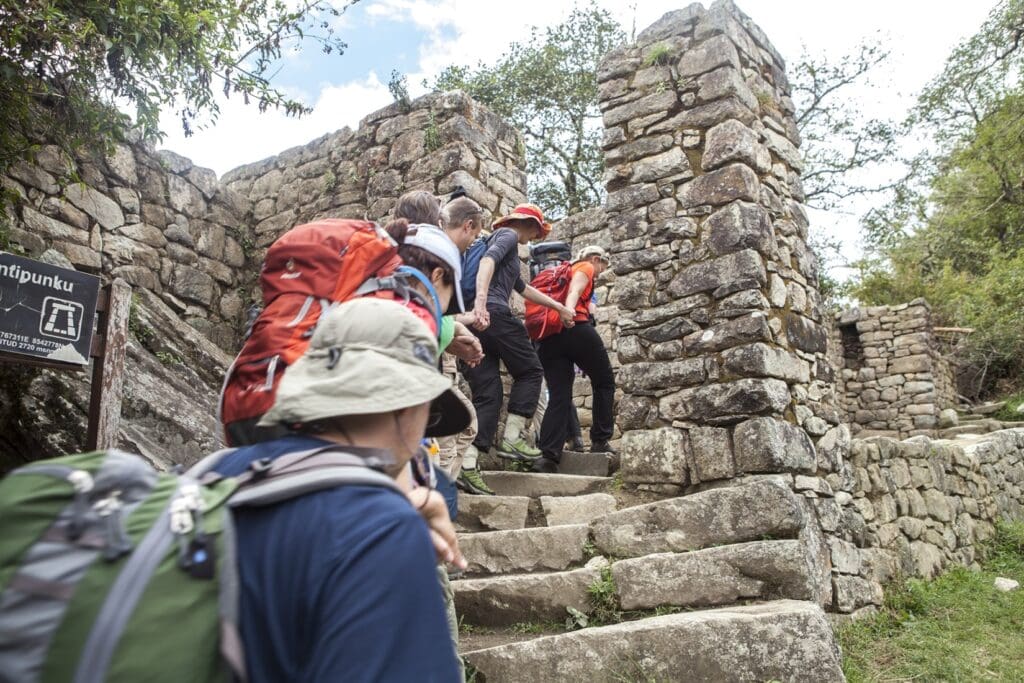
Weather-wise, these are the most popular months to go hiking on the Inca Trail and/or to visit Machu Picchu. With dry weather, very little rain, and cooler nights, hiking during these months is generally more comfortable than at other times of the year. The downsides can include the challenge of securing accommodations and trail permit reservations, as they will be scarce.
October
With fresher, cool temperatures, this is great weather to hike the Inca Trail. Although it is colder than many of the other months, October is reasonably dry and falls outside of holiday periods, making it a great time to go hiking in Peru in general. The off-peak season provides choice hotels and quieter experiences when traveling and dining, as well.
November and December
November and December feature surprisingly good weather for hiking the Inca Trail, with minimal rain. Just before the winter break, the queues and attractions in Machu Picchu and surrounding areas are busy but not overcrowded. Also, the hotels near Machu Picchu and transport are still reasonably quiet.

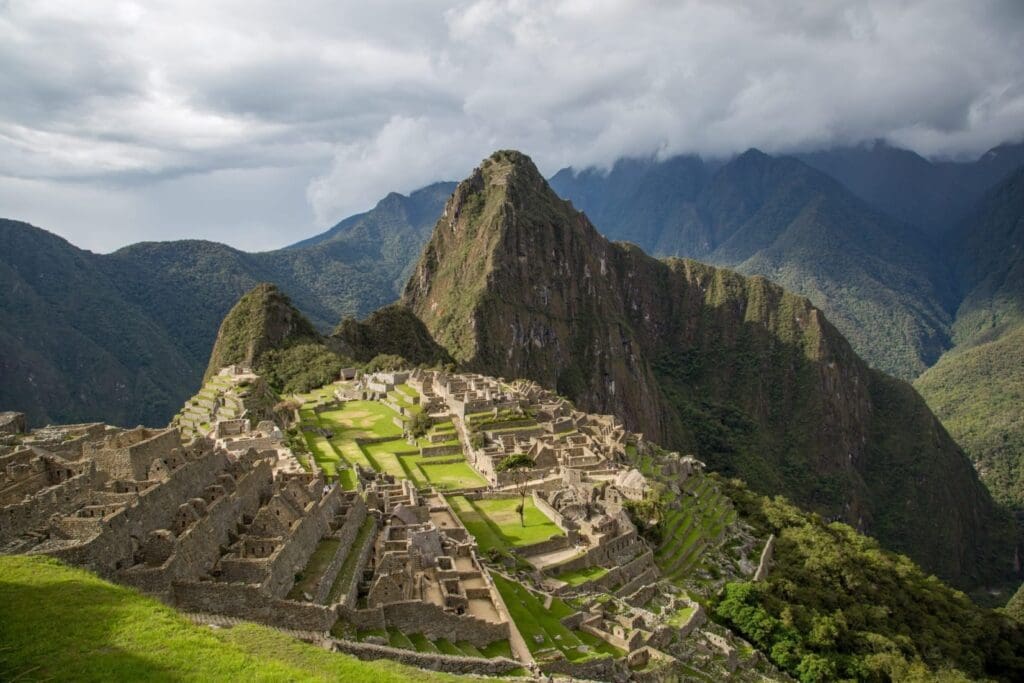
And there you have it, an introduction to the need-to-know essentials for hiking the Inca Trail and visiting Machu Picchu! We hope this guide has given you an informative and helpful idea of what to expect as you plan your one-of-a-kind adventure to Peru. If you have any additional questions on hiking to or visiting the iconic Machu Picchu citadel, please do not hesitate to contact us. Learn more about our Inca Trail to Machu Picchu hiking tour here.
I look forward to seeing you on the Trail!
Cheers,
Jeff
Jeff Bonaldi
Founder & CEO
The Explorer’s Passage
About Jeff Bonaldi
Jeff Bonaldi is the Founder and CEO of The Explorer’s Passage, a premier adventure travel company. His mission is to provide travelers with the opportunity to transform their lives and the planet through the power of adventure.
Learn more about Jeff’s story and his company HERE.
Disclaimer: this information is current as of December 2022, and is for informational purposes only. Factors such as conditions, Peruvian government regulations, trail accessibility, etc. can be variable over time and will also be influenced by your choice of tour operator or guide company. As such, the Explorer’s Passage cannot guarantee that this information will remain constant in the future.
Share this amazing location!
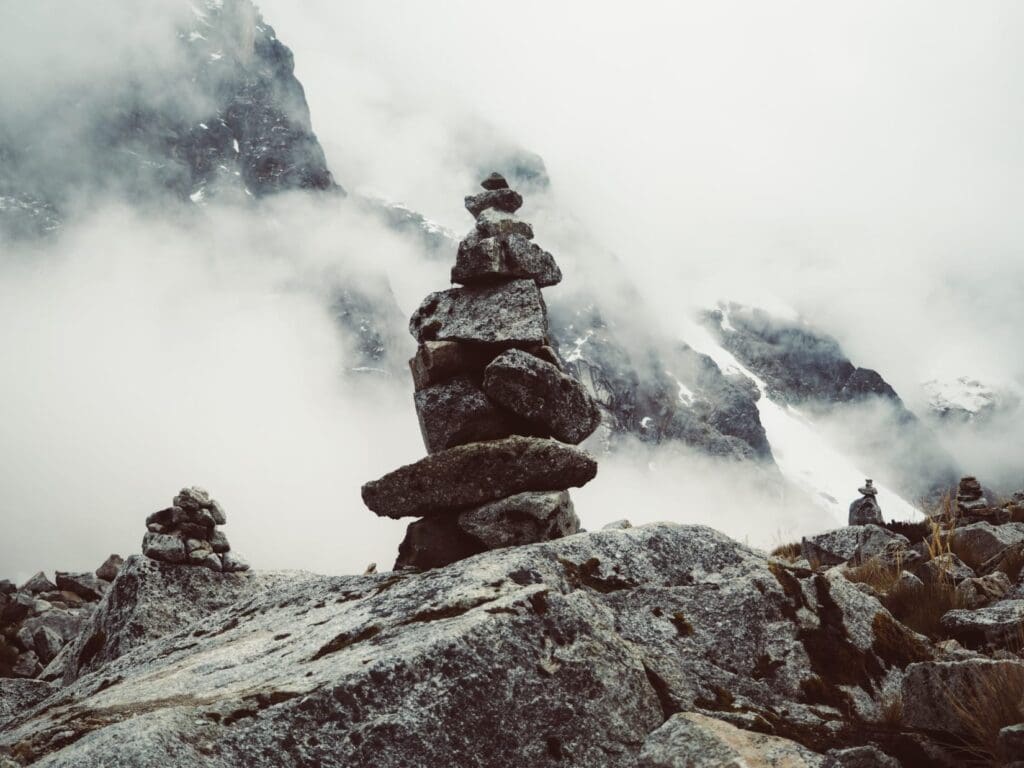
Frequently Asked Questions
Yes, you must obtain a permit to hike the Classic Inca Trail to Machu Picchu route. Permits allow the Peruvian government to protect the landmark for its natural and historical significance. Therefore, only 500 individuals are allowed on the Classic Inca Trail tour each day from KM 82. Around 300 of these will be porters, guides and other staff, which leaves room for 200 trekkers that can join the trail per day.
Due to the global popularity of this trek, permits must be purchased before you leave for Peru – sometimes many months before a trip commences, so plan ahead. The Explorer’s Passage can help!
There are several locations along the route that have outhouse-style toilets that are serviced by trail maintenance personnel. However, trekkers often prefer portable toilets that most tour operators bring on the trek and set up during breakfast, lunch and dinner. They also stay accessible throughout the evening.
During the daily trekking segments, there are also places in nature where you will be able to relieve yourself and you may use a urine funnel, if you wish. It is important to note that you are required to carry all solid waste out, because human waste is not permitted to be left along the Inca Trail or its surroundings.
Altitude and its effects can cause challenges for even the fittest traveler, so we strongly recommend you complete a detailed 3- to 5-month training plan before arriving in Peru. Your training plan should include but not be limited to day hikes of at least 8 to 10 miles (13 to 16 kilometers), cardio training, familiarization with multi-day treks and camping, and uphill training on stairs or hills. If you have the opportunity to train at higher altitudes we highly recommend this preparation as well.
Hiking the Inca Trail is moderately difficult, and it is important that hikers take adequate physical preparation. Some sections of the trek are more difficult than others, and involve steep ascents, high altitude, and long days on the trail. Though some may find the distance covered on the trek each day to be challenging, proper physical preparation will allow travelers to enjoy the trek to the fullest.
When trekking along the Classic Inca Trail route, elevation is something to keep in mind. You will be hiking up to nearly 14,000 feet (4,267 meters) in elevation, and on one of the hiking days you could be on the trail for up to 12 hours.
There are several route options to take varying from one to 14 days in duration. Each route caters to different travelers based on preferred length, popularity, and availability of accommodations en route. All four routes are one-way treks.
The Classic Inca Trail Hike is the most popular route to Machu Picchu. Hiking this route can generally take between three and five days. During this route, hikers will travel 26 miles (42 kilometers) in total.
There are a number of trekking routes along the Inca Trail to Machu Picchu. However, the Classic Inca Trail route is a 3- to 5-day hike, and on average, it takes 4 days and 3 nights to reach Machu Picchu.
For those short on time, there is a quicker route to Machu Picchu. This trek starts at KM 104 on the Trail and only takes one day to hike to Machu Picchu.
The Inca Trail to Machu Picchu trek is considered to be one of the greatest adventure experiences on the planet. Thousands of people come from all over the world to explore this ancient site each year. Known as one of the ‘New Seven Wonders of the World’ and officially recognized as a UNESCO World Heritage Site, its striking natural beauty and rich cultural heritage has inspired countless musicians, artists, and photographers.
There are very few places where you have an opportunity to walk through awe inspiring terrain and pass by 500-year-old archeological treasures. It is truly once-in-a-lifetime trek with fascinating views of Peruvian flora and fauna. And at the end of your adventure you are rewarded with a breathtaking view of Machu Picchu.

